Sydney vs Melbourne - who has the best regional rail?
Sydney and Melbourne, as Australia's only 5 million + cities, are traditional rivals. But which one has the best regional rail network. Read on for my thoughts.
Australia may be the world’s sixth largest country, but 90% of its population is strung along the coast. And over a third of Australia’s population is in Sydney and Melbourne alone, with each city having more than 5 million residents. Both cities have extensive rail networks to regional cities within their wider orbit, but which one has the best network?
Firstly, some definitions are in order. In the case of Australia and New Zealand, regional trains refer to trains that run from a major city to smaller regional centres within a couple of hours travel time. Some examples here:
New South Wales: Trains from Sydney to Wollongong, Newcastle and the Blue Mountains
New Zealand: Trains from Hamilton to Auckland and Palmerston North and Wellington
Southeast Queensland: Trains from Brisbane to the Sunshine Coast and the Gold Coast
Victoria: Trains from Melbourne to Geelong, Ballarat, Bendigo and Gippsland
Western Australia: Trains from Perth to Bunbury, Northam and Merredin
In general, the rolling stock has additional features over standard suburban trains. At a bare minimum, this includes toilets but may extend to more comfortable seating, provision for baggage, tray tables and in-seat power, USB ports and on-board catering.
I have previously written (with Malcolm McCracken) about Victoria’s extensive investments in regional rail here. If you haven’t read this before, I recommend checking it out.
Victoria’s Rail Revival – a Role Model for Aotearoa?
Railways were one of the great inventions of the Victorian era. They transformed mobility in Great Britain and the entire world, including Aotearoa, opening up vast new possibilities for business, interpersonal connections and enabling everyone to travel for leisure for the first time. This transformational power of rail was critical to the development …
I am focusing here on connections to regional cities within around 120 kilometres of the major city, generally within around two hours travel time, noting that in both Victoria and New South Wales, there are longer-distance services across their respective states. What follows are my general impressions from having travelled extensively on both networks, focusing on certain key service features. In Victoria, I will look at trains from Melbourne to Geelong, Bendigo, Ballarat and Gippsland. In New South Wales, I will look at trains from Sydney to Newcastle, Wollongong and the Blue Mountains.
Frequency
To repeat the oft-quoted Jarrett Walker maxim, “frequency is freedom.” Although this doesn’t mean exactly the same in an interurban context as it does within an urban area. Generally inter urban trips have some pre-planning involved but even so, both Sydney and Melbourne have good frequencies to their regional cities. Best in class is Melbourne to Geelong with trains every 20 minutes every day of the week, more often in peak periods. But otherwise, frequencies vary between half-hourly and hourly. There is often a mix of service patterns with lesser used stations served by every second trains while major stops are served every train. But typically, it would be unusual for a station to be served less than hourly. This one is a rough tie between Victoria and New South Wales.
Span of service
In both Victoria and New South Wales runs a very long span of service from early morning to late evening every day of the week. But New South Wales is in the lead for early morning service. Recently, I took the 5:20am train from Sydney’s Central Station to Newcastle and this was the third train of the day, with the first departure at 3:50am. In the other direction, it’s even earlier with the first train from Newcastle to Sydney departing at 2:32am. The last train from Sydney to Newcastle leaves at 1:47am with only a two hour gap in service between 1:47am and 3:50am. In Victoria, things are not quite as good with the last train from Melbourne to Ballarat at 11:52pm.
While both Victoria and New South Wales have excellent regional train span of service, New South Wales is in the slight lead.
Speed
This one is a clear differentiator between Victoria and New South Wales, exacerbated by New South Wales’ challenging geography. Outside of Sydney, there has been very little investment since the 19th century in the network outside of Sydney, and the geography is often challenging. Meanwhile, Victoria benefits from being largely flat and sustained investment in faster and more frequent service over the past 20 years. Victoria’s V/Locity trains can and do reach their top speed of 160 km/h for sustained periods on the Geelong, Ballarat and Bendigo lines. The Geelong Line achieves an average speed of 80km/h including stations stops between Melbourne and Geelong and carried 8.15 million passengers in the 2022-2023 financial year.
Meanwhile in New South Wales, the Newcastle Line is both very scenic and very slow. For example, my 5:20am train, on an express pattern with only a very few key stops, got me to Newcastle Interchange at 7:53am, covering the 165 kilometres at an average speed of 66 kilometres per hour. The new Mariyung trains being introduced to New South Wales regional services can run up to 175km/h but the maximum track speed is 130km/h, achieved in practice only for a tiny proportion of the journey.
Victoria is a clear winner in the speed stakes. But if high speed rail ever eventuates between Newcastle and Sydney, that could turn the tables the other way, at least on the Newcastle line.
Comfort
While new trains do a good job of providing for accessibility, they don’t always do a good job of providing passenger comfort, especially important for longer journeys. The new Mariyung trains in New South Wales have seats that look more comfortable than they actually are, while Victoria’s V/Locity trains have seats that both look comfortable and are in fact comfortable. But the Mariyung trains do have in-seat plug sockets and USB ports as well as GPS visual and audio tripped next station announcements, and include a narrative around the indigenous names of the trains while the V/Locity trains have none of these, and manual station announcements.
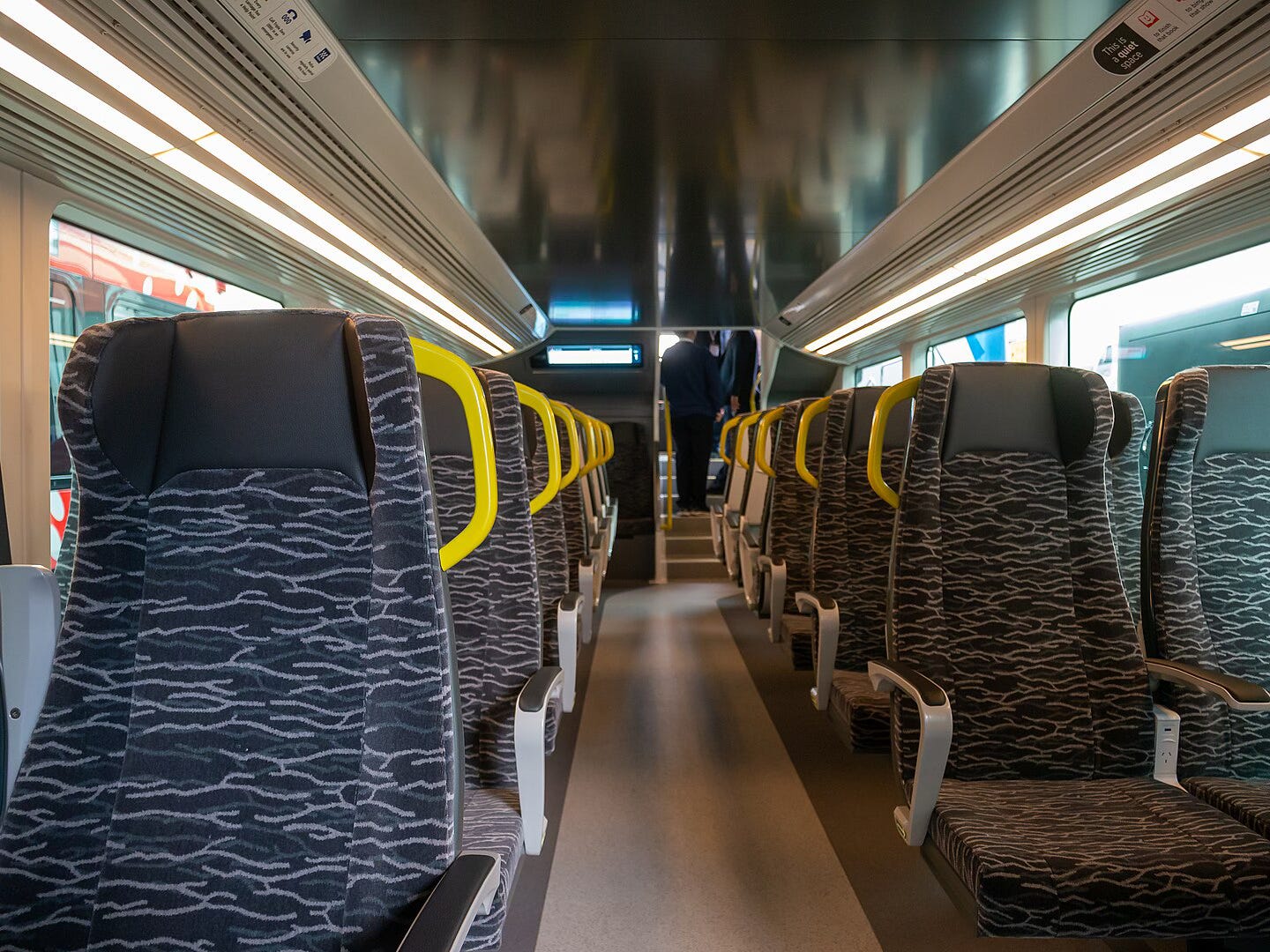
Again, Victoria is a winner in this category, noting the superior features of the New South Wales Mariyung trains.
Price
Victoria has a daily fare cap of $11 ($7.60 at weekends) for all statewide public transport. New South Wales has a range of fare types and discounts but a normal adult Sydney to Newcastle fare is $7.23, which isn’t bad for a journey of 165 kilometres. So between Victoria and New South Wales, the winner is again Victoria.
But the actual winner is Queensland with a flat fare, including free transfers, of 50 cents for any urban network journey. This includes regional trains from Brisbane to the Sunshine Coast and the Gold Coast.
Final thoughts
In any beauty contest, there is a winner and a loser. But this is a case of two regional networks that are both very good in many regards so it seems a bit unfair to pit one against the other. But what is clear is that both networks offer a lot of flexibility and freedom to travel broadly between the state capital and its regional cities. While comfort and speed is important, frequency and span of service is more important as this is what delivers abundant access, again quoting Jarrett Walker.
So next time you’re in either Sydney or Melbourne, do check out their very good regional train networks and see more of New South Wales than the centre of their state capitals. These are journeys well worth making, and made easy by great regional train networks.

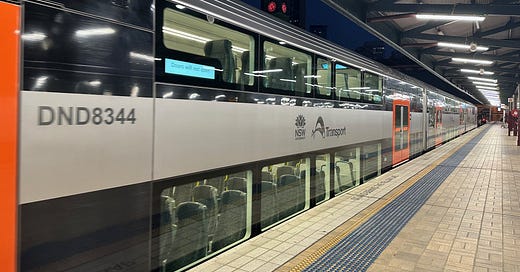



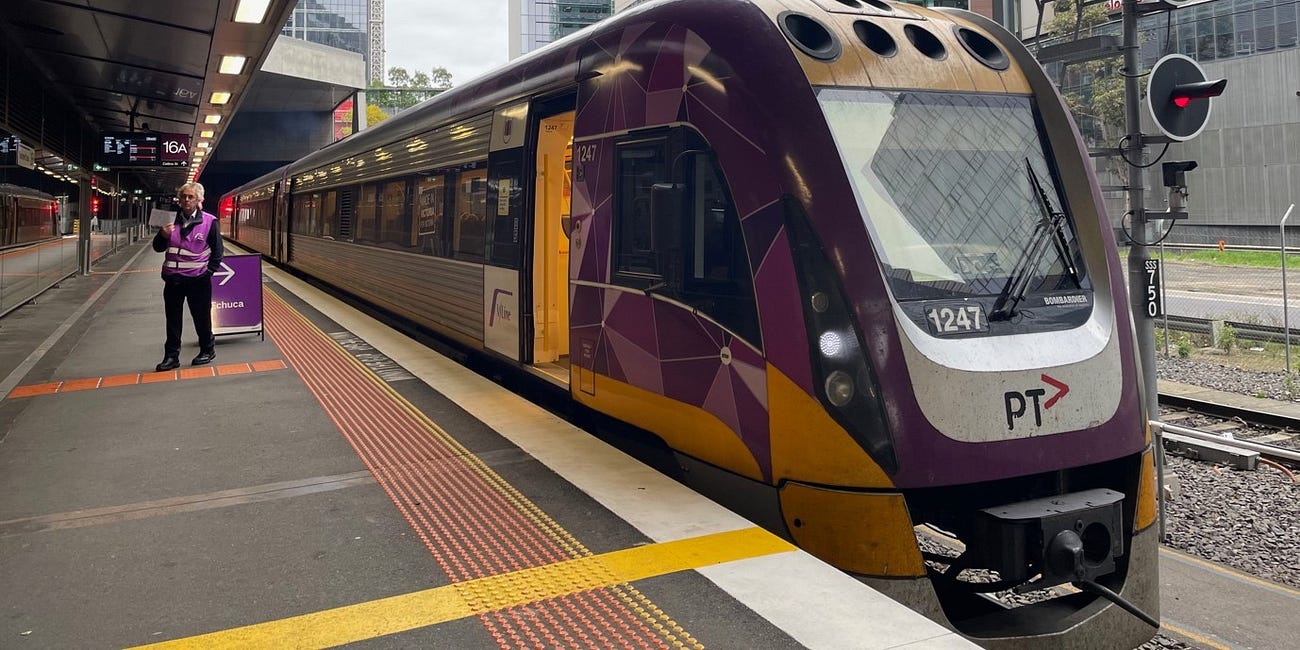
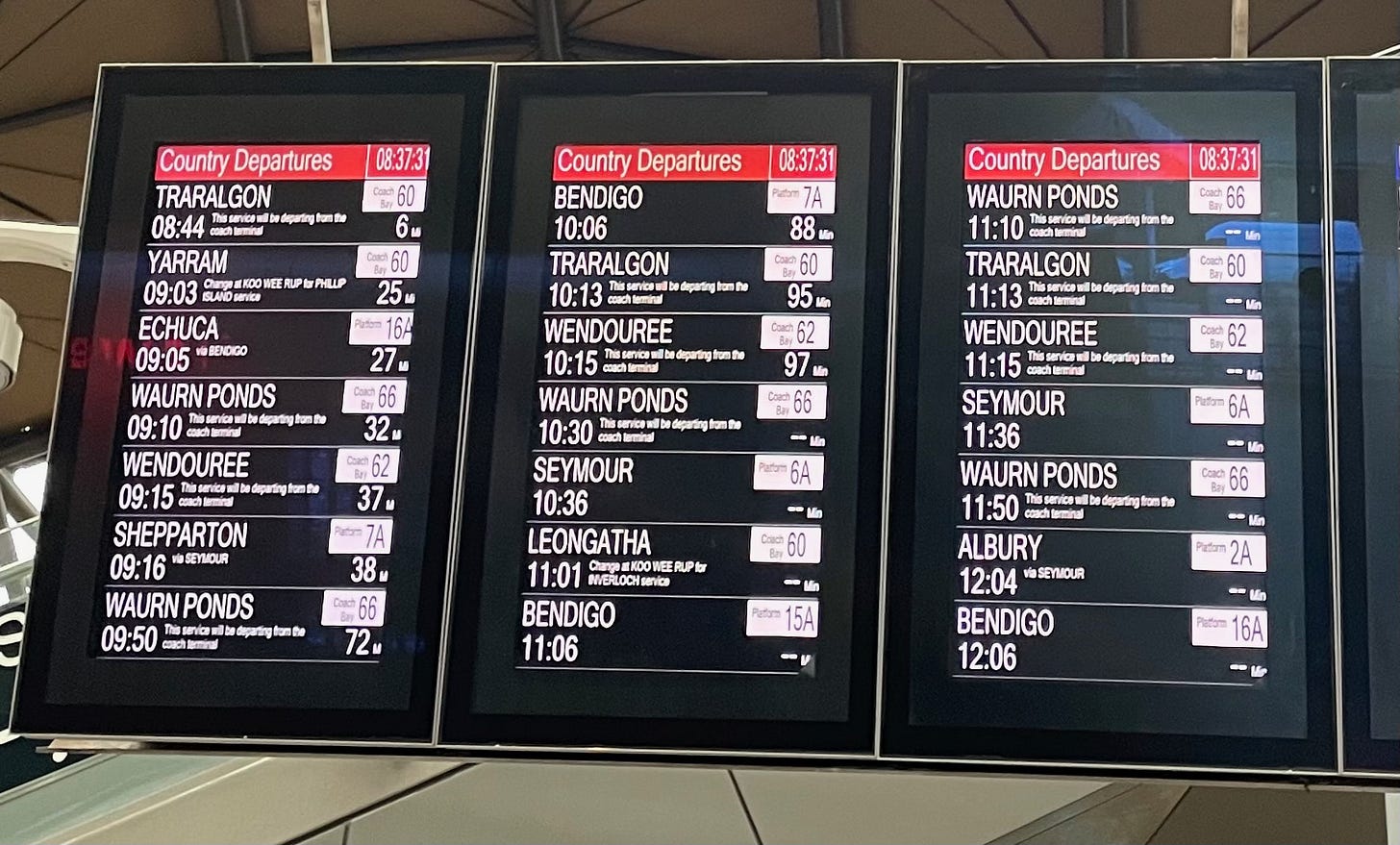
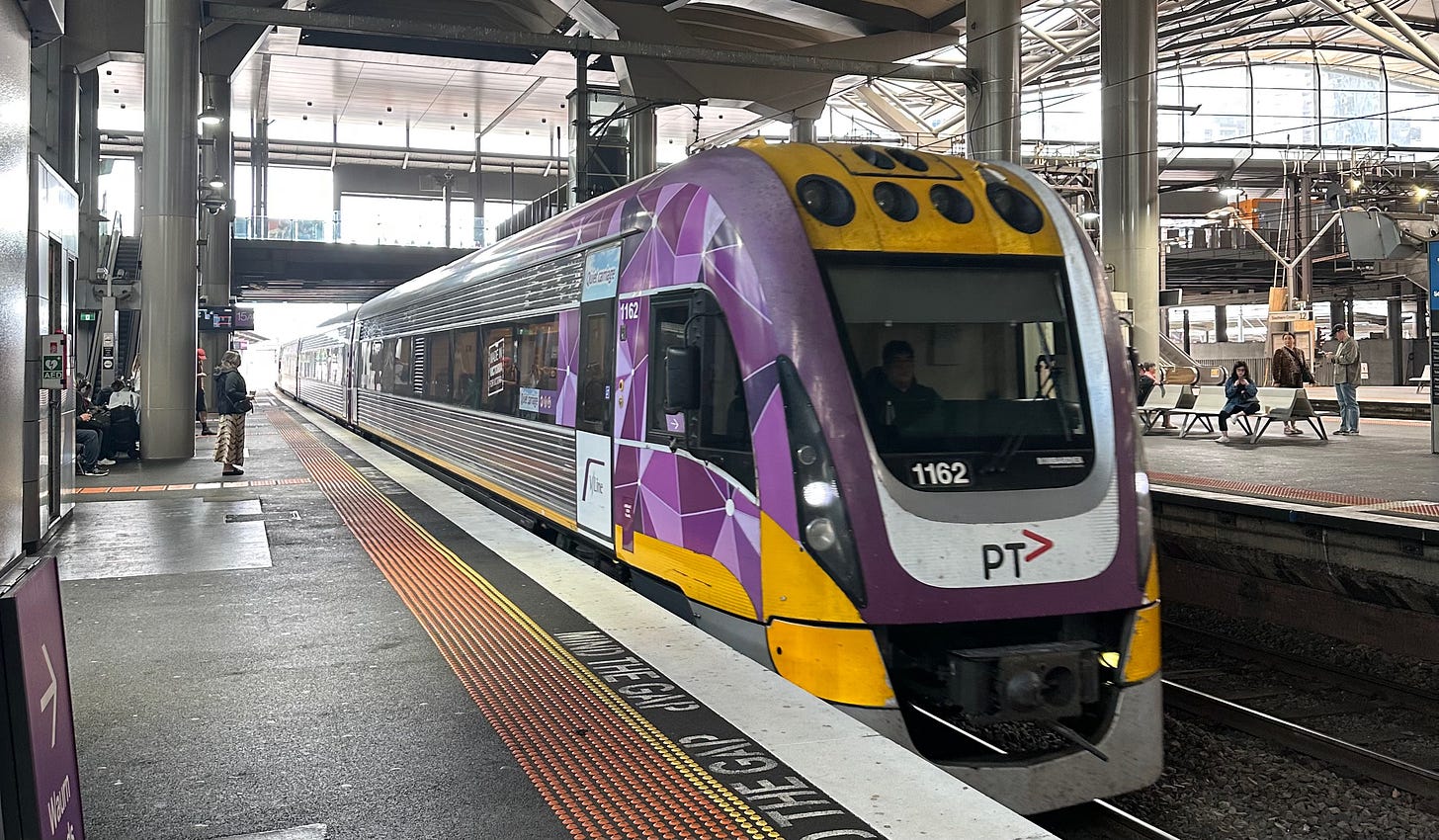
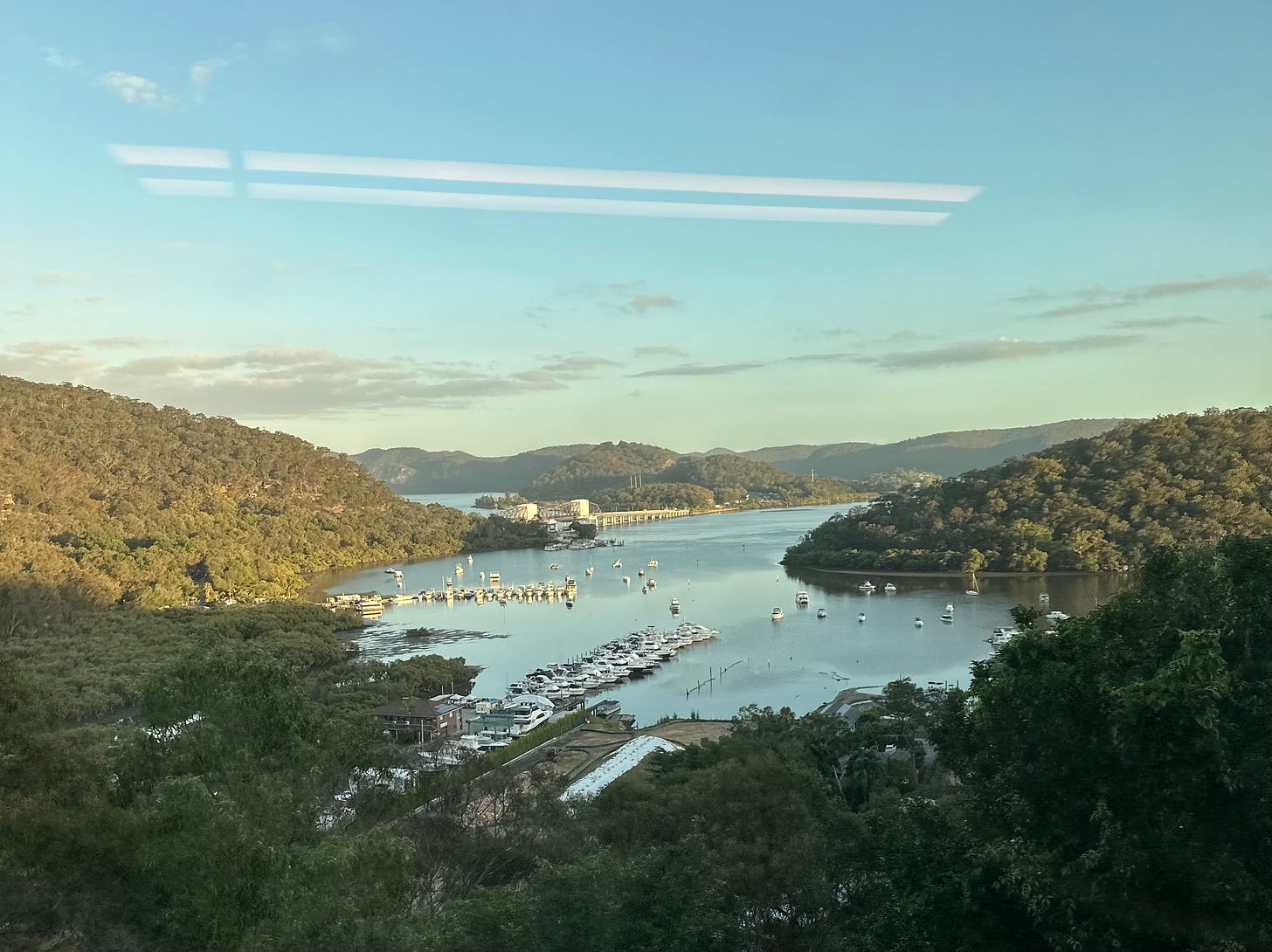
When we were in Sydney last year I think the daily price cap was about $18… still not bad! Queensland sounds amazing though.